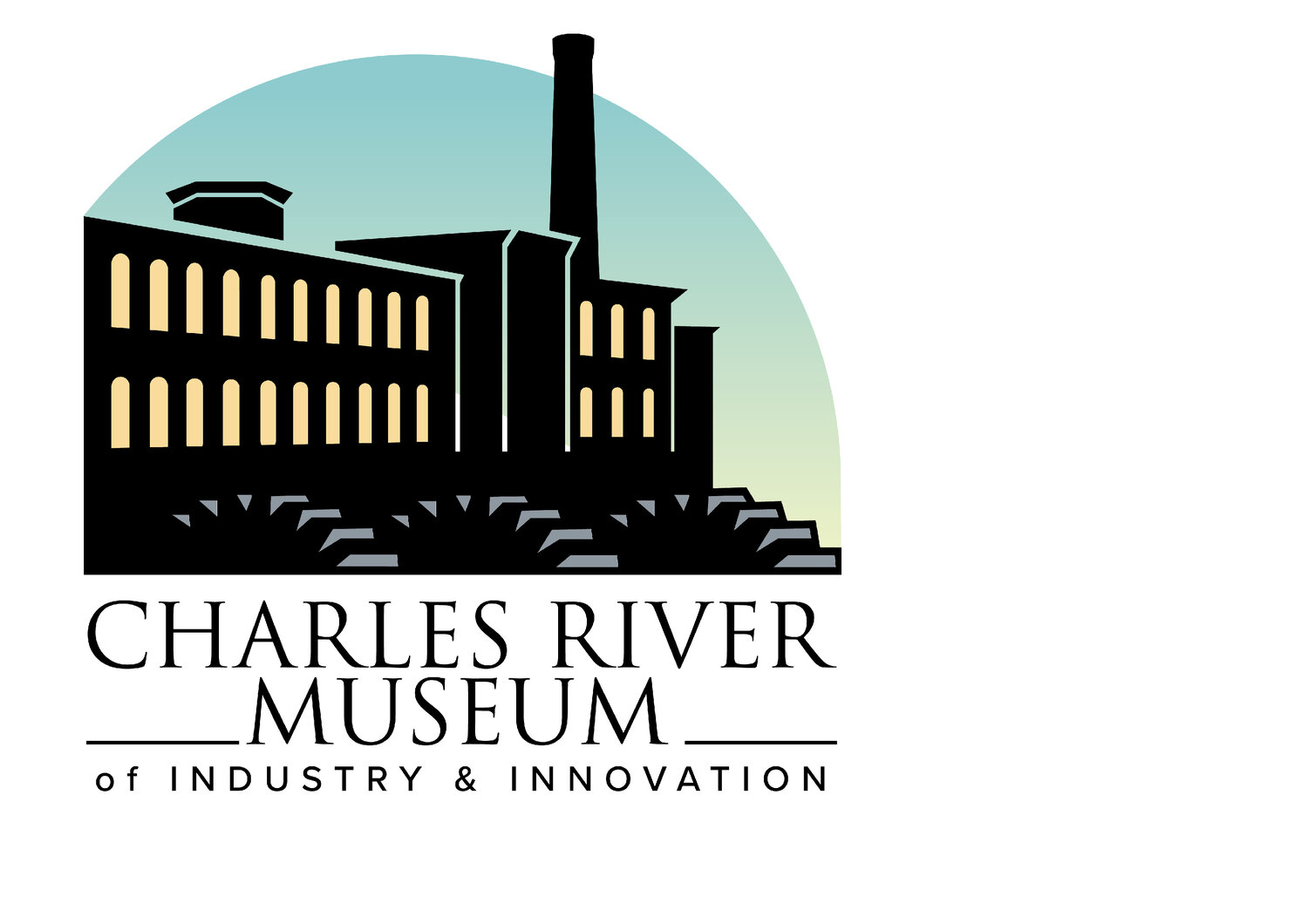Internship Opportunities
One Intern’s Experience
Kaitlyn Hughes joined the Charles River Museum as a paid intern in early 2023 and quickly made herself an invaluable part of our Museum team. She was involved in a broad range of roles and responsibilities over her time here, within numerous departments, including Education, Visitor Services, and Exhibit Management and Display.
Here, in her words, is an overview of her experience with us.
The Museum:
The Charles River Museum of Industry and Innovation is settled at the end of a vast brick complex, a towering smokestack stretches up from the museums walls, visually separating the last building in the line from its neighbors. On the inside there are winding nooks juxtaposed with the main gallery’s vast and echoing ceiling. The exhibits are part of the landscape, the machine shop nestled in the corner of the main gallery looking ready for use, and the old cars and bicycles are conspicuously lined up along the sloped floor and neighboring wall as if you walked into an old garage with vehicles stored for use.
I walked into this vast and windy place three days a week for 6 months. The industrial arrangements that initially struck me soon faded into my periphery. The museum became familiar, welcoming. Driving in each day I would look out for the towering smokestack, knowing I would be moments away from starting my day.
The Job:
I joined the museum as a paid intern and I had some sense of routine: I came in at 10am. I worked 15 hours a week. I was paid every two weeks. I attended the weekly staff meetings on Wednesdays. But that was the end of the routine. Each week, each day, there was something new going on. One day could be a whirlwind of activity, the next could be so quiet I would set to work making up my own projects, with sporadic interruptions to jump up and help with something more pressing.
I enjoy set routines and schedules, but despite not having typical “day”, I found the work extremely fulfilling. When I started, I had just graduated from my second master’s program. I had been in college since I was 17 years old and now I was starting at a place with no syllabus, no set schedule, and—as far as I was concerned—no real world skills to help me. Perhaps it was because of the ever-changing expectations in my internship that allowed me to acclimate so easily. Without a set routine, I was able to put my academic skills to the test. This internship allowed me to develop the kind of practical work confidence that I wasn’t sure I had.
With the help of my coworkers, I was able to create and develop exhibits, assist in educational programs, and conduct tours. In all of these I started to see the impact my years of education had on my ability to create plans and adjust to new circumstances. This internship ended up giving me more than I thought it would. It gave me an invaluable opportunity to grow as a professional.
Kaitlyn Hughes — Tintype portrait taken by master photographer Daniel Leocadi as part of his wet-plate photography Tech Talk given during Kaitlyn’s tenure with the Museum
The Day-to-Day:
Most of my time at the museum I spent with Joe, whose job is beyond description and Katherine, the museum’s educator. With Katherine, I worked preparing for school visits: going over the expected attendance numbers, reviewing programming, prepping the spaces we would be using. We also worked together to create new programs and activities to expand the museum’s educational offerings. It was exciting to learn how out of the box museum programing could be compared to classroom teaching.
With Joe I worked researching and creating new exhibits for the museum. During my six-month internship, we were able to create three exhibits (the last, Mill at the Falls, was still under construction when I left). This process was entirely new to me, but I quickly learned that a lot of it was reading and researching, something I was all too familiar with from my years in college.
Creating exhibits gave me the opportunity to create history that the public could interact with. Too often it seems, the newest and most compelling historical interpretations are trapped in verbose texts that employs an academic lexicon which the average reader will, understandably, disengage from. Spending hours in the Waltham Public Library and scouring internet databases on the computer was tiring, but it was worth it to see our approachable interpretation of history displayed on glossy foam board. It always made my day when a visitor would linger over one of our displays and comment on how they didn’t know that, or how interesting this was.
If you were looking for a place where there was something new happening every other week, where your limits would be tested, and where you could develop your theoretical skills into practical ones, then the last brick building in the old mill complex, the one with the smoke stack towering over it, the one that sits along the Charles River in Waltham, might be a good place for you to grow too.



